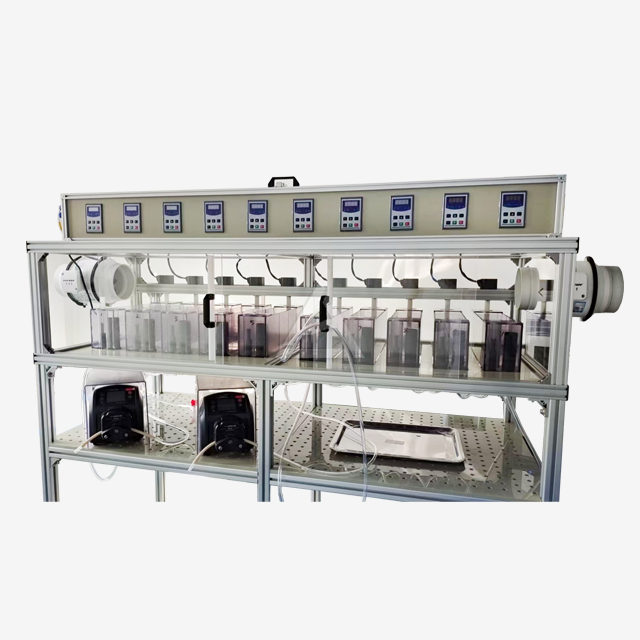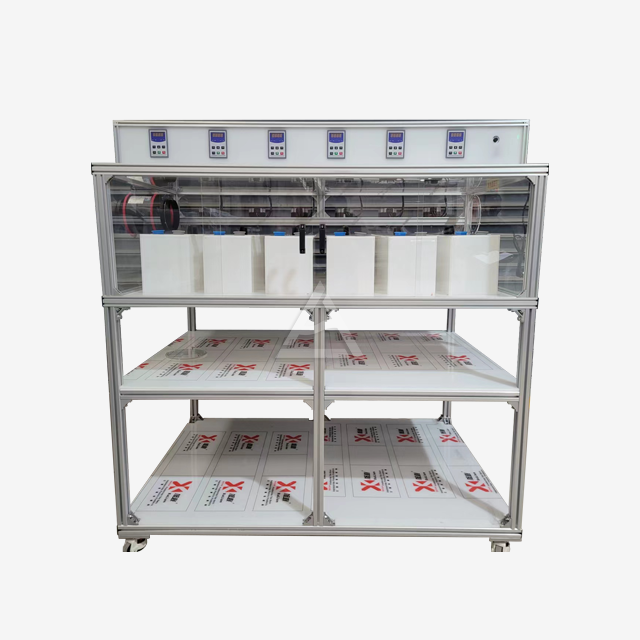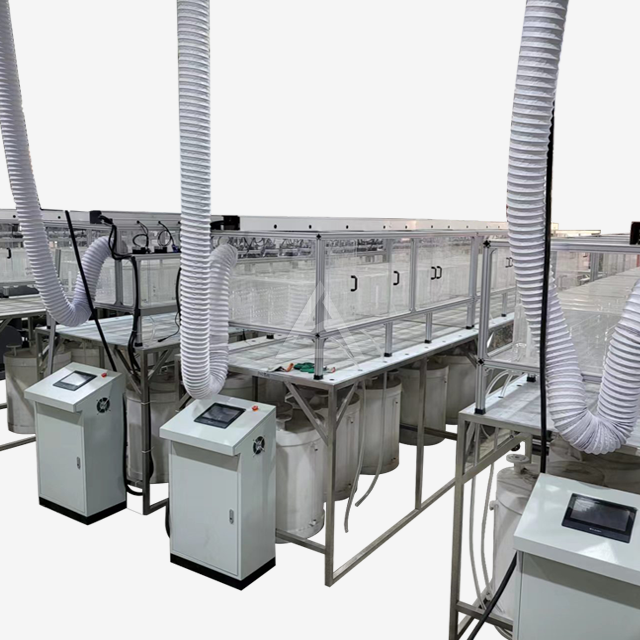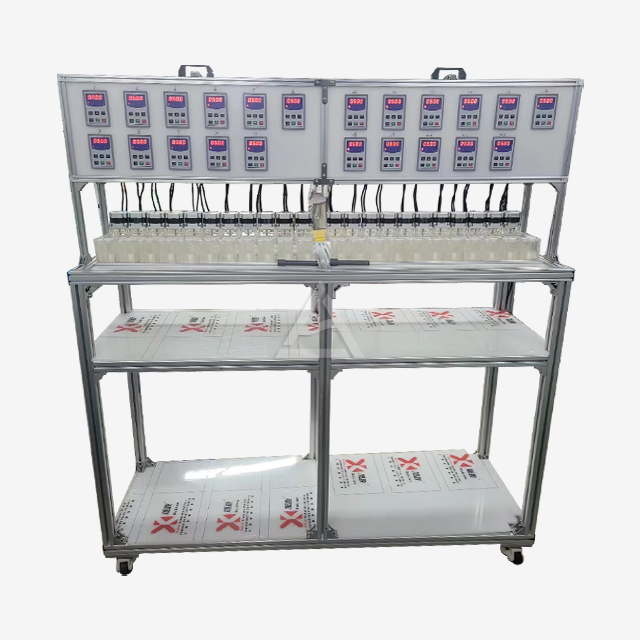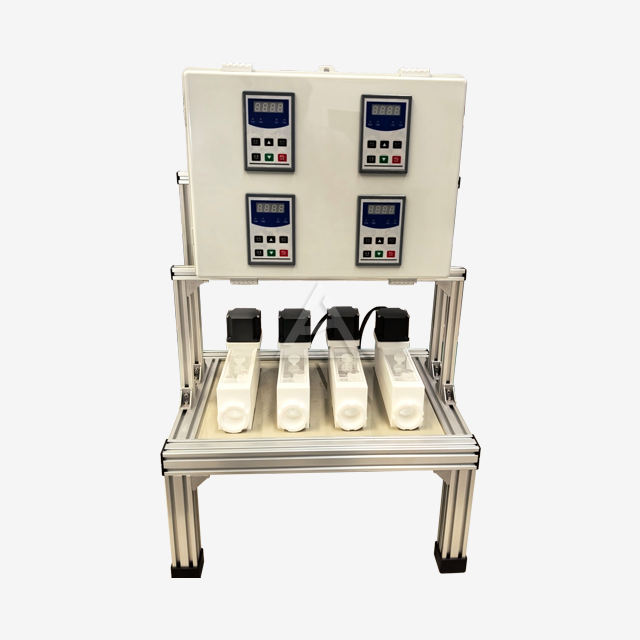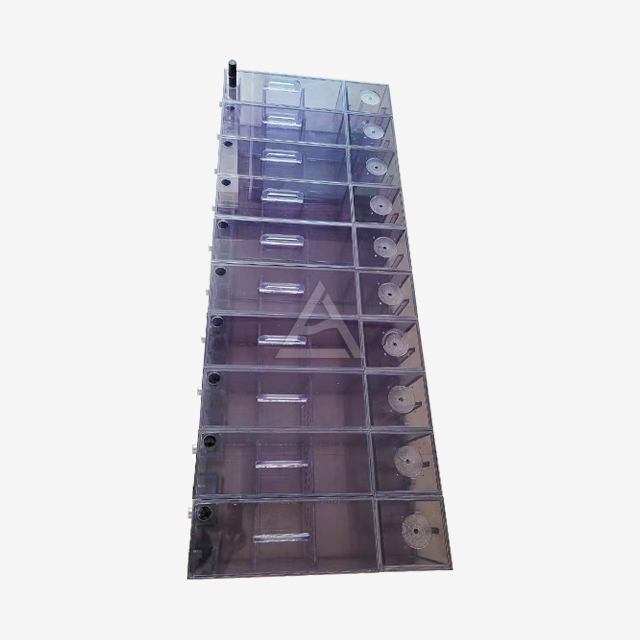The Fundamentals of Mixer Settler Technology
How Mixer Settlers Work?
Mixer settlers operate on a simple yet effective principle. The process begins in the mixing chamber, where two immiscible liquids are vigorously agitated. This creates a large interfacial area, promoting mass transfer between the phases. The mixture then flows into the settling chamber, where gravity separation occurs. Here, the phases separate based on density differences, with the lighter phase rising to the top and the heavier phase settling at the bottom.
The key to efficient operation lies in the design of these chambers. Modern mixer settlers feature optimized impeller designs for thorough mixing and carefully engineered baffles in the settling chamber to promote smooth, laminar flow. This ensures rapid phase separation without re-mixing, leading to high-purity recovered solvents.
Advantages Over Traditional Methods
Compared to conventional solvent recovery methods, mixer settlers offer several distinct advantages. Their modular design allows for easy scaling and customization to specific process requirements. This flexibility is particularly valuable in industries with varying production volumes or those exploring new chemical processes.
Energy efficiency is another significant benefit. The staged nature of mixer settlers allows for more efficient mass transfer, reducing the overall energy input required for solvent recovery. Additionally, the ability to fine-tune operating parameters such as mixing speed and residence time enables process optimization, further enhancing energy savings.
Key Components and Materials
The choice of materials is crucial in mixer settler construction. Depending on the application, components may be fabricated from corrosion-resistant alloys like SUS316L, or chemically inert plastics such as PTFE or PEEK. For applications requiring visual monitoring, transparent materials like PMMA can be incorporated into the design.
Critical components include the agitator, which must provide efficient mixing without excessive shear, and the weir system in the settling chamber, which controls phase separation. Advanced designs may also incorporate features like pH adjustment devices or temperature control systems to further enhance process control and efficiency.

Applications Across Industries
Rare Earth Element Extraction
In the rapidly growing field of rare earth element (REE) extraction, mixer settlers play a pivotal role. These systems excel in separating and purifying elements like neodymium and dysprosium, which are critical for advanced technologies. The multi-stage capability of mixer settlers allows for the complex separation processes required to isolate individual REEs from ore concentrates.
For instance, in neodymium extraction, mixer settlers can be configured to perform a series of solvent extraction steps, each optimized for specific impurity removal. This results in high-purity neodymium suitable for use in powerful permanent magnets, essential for electric vehicles and wind turbines.
Battery Recycling
As the demand for lithium-ion batteries grows, so does the need for efficient recycling processes. Mixer settlers are increasingly employed in battery recycling plants to recover valuable metals like lithium, cobalt, and nickel. The technology's ability to handle complex multi-component systems makes it ideal for processing the diverse chemical mixtures found in spent batteries.
In a typical process, crushed battery materials undergo leaching to dissolve the metals. The resulting solution is then fed into a series of mixer settlers for selective extraction and purification of each metal. This staged approach allows for high recovery rates and produces metals of sufficient purity for direct reuse in new battery production.
Nuclear Fuel Reprocessing
In the nuclear industry, mixer settlers have long been a staple of fuel reprocessing operations. The technology's reliability and precision are crucial when handling radioactive materials. Mixer settlers are used in the PUREX (Plutonium Uranium Redox Extraction) process to separate uranium and plutonium from spent nuclear fuel.
The process involves dissolving spent fuel in nitric acid, followed by a series of solvent extraction steps using tributyl phosphate in an organic diluent. Mixer settlers provide the controlled environment necessary for these delicate separations, ensuring safe and efficient recovery of fissile materials for potential reuse in new fuel assemblies.

Optimizing Solvent Recovery Processes
Process Control and Automation
Modern mixer settler systems leverage advanced process control and automation to maximize efficiency. Integrated sensors monitor key parameters such as pH, temperature, and interface level in real-time. This data is fed into sophisticated control systems that can make rapid adjustments to maintain optimal operating conditions.
For example, in a rare earth extraction process, automated control of the aqueous-to-organic phase ratio is critical for maintaining extraction efficiency. By continuously monitoring and adjusting this ratio, the system can compensate for variations in feed composition, ensuring consistent product quality and maximizing solvent recovery rates.
Enhancing Mass Transfer Efficiency
Improving mass transfer efficiency is a key focus in mixer settler design. Recent innovations include the development of high-performance impellers that create optimal mixing patterns while minimizing energy input. These designs ensure thorough phase contact without excessive shear, which can lead to unwanted emulsion formation.
In the settling chamber, advanced baffle designs promote rapid phase separation. Some systems incorporate coalescence-enhancing materials or electrostatic coalescers to accelerate the separation of fine droplets, further improving overall efficiency and reducing carryover of one phase into another.
Sustainable Design Considerations
As industries strive for greater sustainability, mixer settler designs are evolving to meet these demands. Energy-efficient motors and variable frequency drives reduce power consumption, while improved sealing technologies minimize solvent losses and emissions. Some manufacturers now offer modular designs that facilitate easy maintenance and component replacement, extending the operational life of the equipment.
Material selection also plays a role in sustainability. The use of recyclable or bio-based materials for non-critical components is becoming more common. Additionally, the inherent efficiency of mixer settler technology in recovering and reusing solvents contributes significantly to reducing the environmental footprint of many chemical processes.

Conclusion
Mixer settler technology has proven to be a game-changer in enhancing solvent recovery across various industries. Its ability to combine efficient mixing and separation in a compact, modular design offers unparalleled flexibility and performance. As industries continue to seek more sustainable and efficient processes, the role of mixer settlers in solvent recovery is likely to grow. With ongoing advancements in materials, design, and automation, these systems will remain at the forefront of separation technology, driving innovation and efficiency in chemical processing for years to come.
Contact Us
Ready to optimize your solvent recovery process? Cuiyan Technology offers cutting-edge mixer settler solutions tailored to your specific needs. Experience improved efficiency, reduced costs, and enhanced sustainability. Contact us today at wangzhijun@cuiyan-tec.com to explore how our advanced technology can transform your operations.





